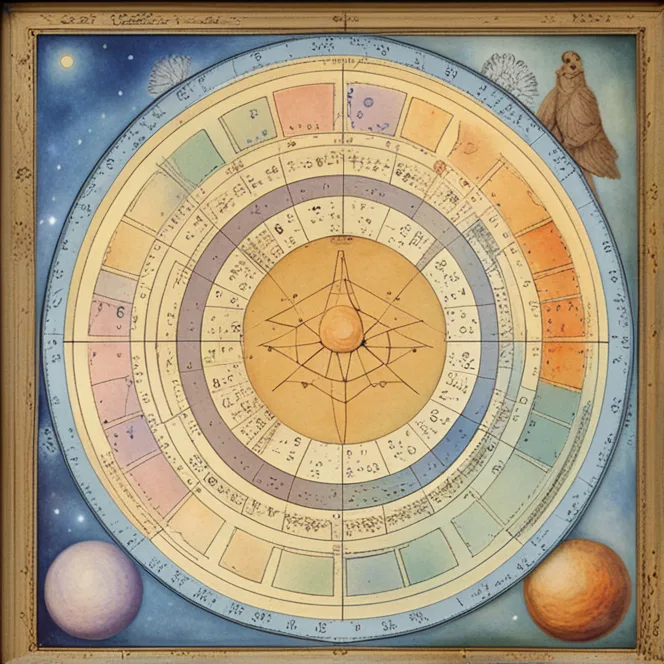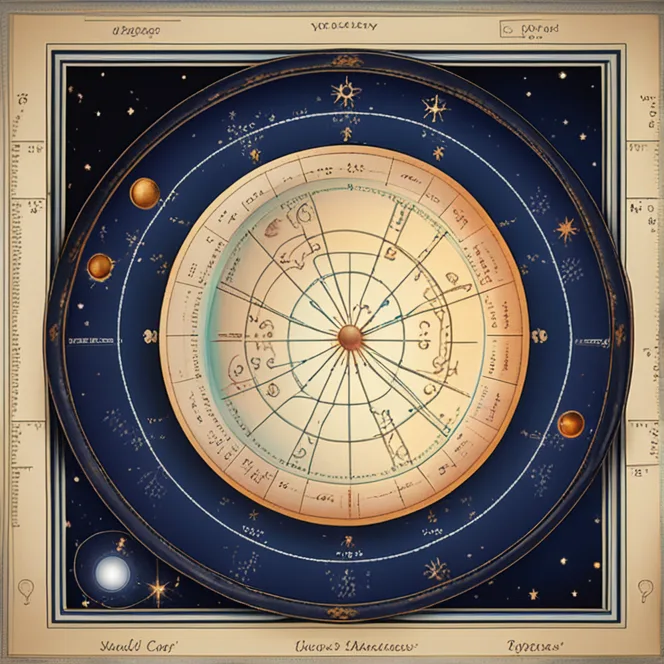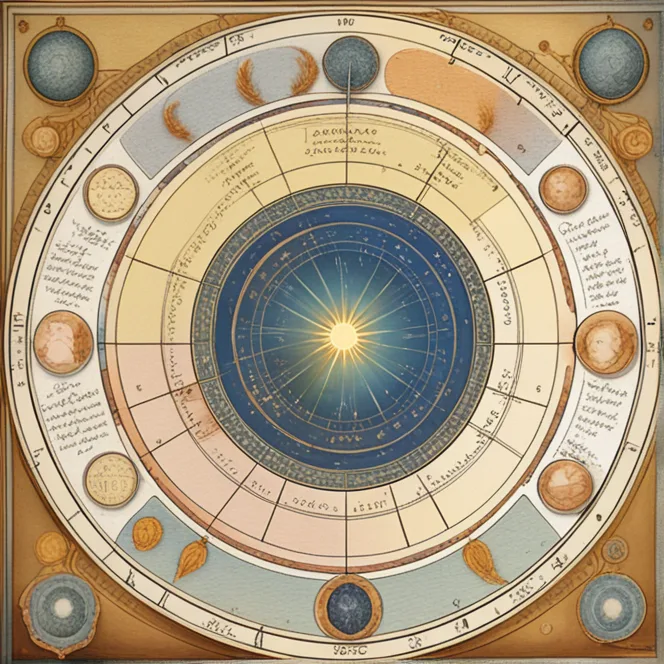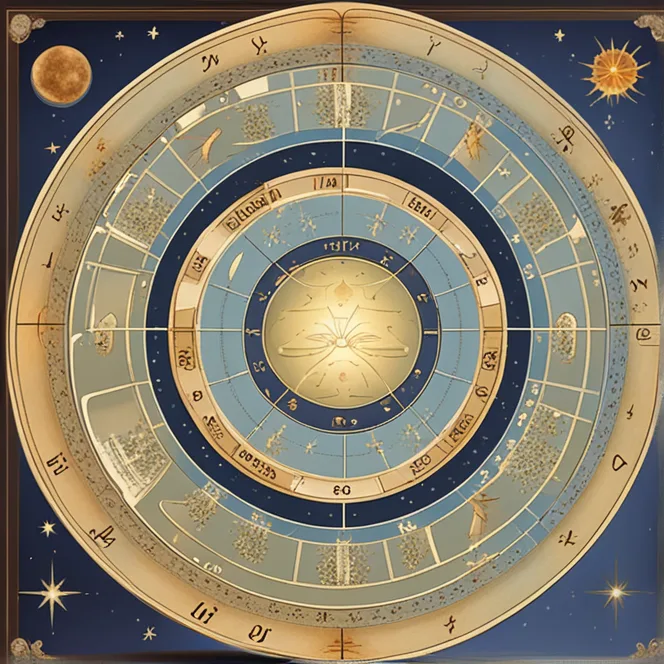
The Stars of Love: Compatibility & Natal Charts
Explore the cosmic influences on relationship dynamics through the lens of natal chart compatibility.
article by Sofia Ferguson
The Astral Connection
Astrology offers a unique window into the ways we connect with others, and among its myriad uses, the natal chart stands out as a profound tool for understanding relationship dynamics. When we overlay two individuals' charts—one on top of the other—we engage in the art of synastry. This age-old practice examines the planetary interplay between charts to reveal the undercurrents of our interactions, providing insight into areas of harmony and potential conflict within any relationship. Analyzing aspects between planets, we glean how two people's energies merge, creating both opportunities and challenges on their shared journey.

Planetary Patterns of Partnership
In the dance of compatibility, the Sun, Moon, and personal planets (Mercury, Venus, and Mars) take leading roles in painting a picture of relationship potential. The Sun expresses our core being, while the Moon uncovers emotional needs and comfort zones. Venus unveils our love style, and Mars charges forth with our sexual and assertive energies. Mercury's placement, on the other hand, dictates communication patterns. Favorable aspects such as trines and sextiles between these celestial bodies in two natal charts suggest natural ease and flow, while squares and oppositions might forecast friction that requires conscious navigation.

Decoding Love's Language
Beyond the planets, the angles in our natal charts also participate in the compatibility conversation. The Ascendant or Rising sign can influence first impressions and initial attractions, setting the tone for the relationship's unfolding. Conversely, thoughtful examination of the North Node divulges soul paths and the lessons drawn towards each other, potentially leading to profound personal evolution. When these significant points resonate sympathetically between two charts, they foster a sense of destiny and purpose in a union, drawing two individuals together as if by a magnetic force.

The Synastry of Souls
Relationship astrology is not a mere matchup of singular celestial points but a complex interweaving of multiple astrological factors. The house placements of each other's planets can illuminate where energies are most likely to manifest in the relationship, and how each partner can best support the other's growth. For instance, your partner's Jupiter in your seventh house might suggest an expansive, lucky influence on partnerships, while Saturn in the same house could signal serious intentions but also potential limitations or challenges.

Navigating Challenges
It's vital to approach synastry as a guide rather than a deterministic map. Difficult aspects don't necessarily doom a relationship; instead, they point to areas where conscious effort and understanding can foster stronger bonds. Through the lens of compatibility, we learn how to lean into the strengths and navigate the less harmonious facets of our connections. Success in relationships may very well depend on this willingness to work through the tougher astral influences highlighted by our natal charts.
The Journey Together
Finding love, maintaining it, and growing within it is a continuous journey—one that is deeply personal yet universally human. Natal chart compatibility provides a unique perspective, allowing us to better navigate the waters of our relationships with wisdom and empathy. While not all answers lie in the stars, they can offer guidance, deepening our understanding of one another on levels we might never anticipate. Ultimately, how we use this celestial insight is up to us, as we co-create our narrative in the symphony of the cosmos.
Published: 12/5/2023
Modified: 12/5/2023
More predictions
Come back here soon to learn more about yourself and your future


Synastry Squares and Oppositions: Overcoming Astrological Challenges
In the complex world of astrological synastry, squares and oppositions are often viewed as red flags, indicating potential areas of conflict in relationships. However, these challenging aspects are not merely obstacles but are, in fact, profound opportunities for growth and deeper understanding. They bring to light the underlying tensions and differences that, when navigated thoughtfully, can lead to greater mutual understanding and relationship resilience. Squares and oppositions demand attention and effort; they require couples to actively engage in communication and compromise, turning potential weaknesses into strengths. These aspects are not just tests of a relationship’s durability but are invitations to explore and embrace each other’s complexities, ultimately leading to a more enriched and fulfilling union.


Transits in Synastry: Guiding Relationship Tides
The cosmos plays a pivotal role in the dance of relationships, with planetary transits acting as key influencers in the dynamics between partners. In astrology, these transits – the movement of planets across different points in the natal charts – can have profound effects on relationships, known as synastry. As planets move and form aspects with positions in our own and our partner's charts, they trigger various energies and themes. This celestial interplay can enhance compatibility, bring challenges to the surface, or catalyze growth and change. Understanding the impact of planetary transits on synastry helps couples navigate through different phases of their relationship, making sense of the ebbs and flows in their connection.


Patience: The Keystone Of Relationship Compatibility
In the intricate journey of relationships, patience stands as a fundamental virtue, often undervalued in our fast-paced society. It's a vital ingredient in the recipe for a strong, compatible relationship, fostering an environment where love can flourish unhurriedly.